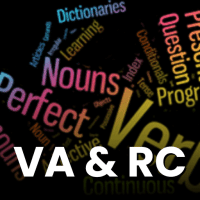Verbal Exam > Verbal Questions > In wartime there is often a ____________ of f...
Start Learning for Free
In wartime there is often a ____________ of food.
- a)LACKAGE
- b)NECESSITY
- c)SHORTAGE
Correct answer is option 'C'. Can you explain this answer?
Most Upvoted Answer
In wartime there is often a ____________ of food.a)LACKAGEb)NECESSITYc...
During war time food will be present but there will be lacking quantity which do not fulfill the necessary food and leads to shortage of food.
Free Test
FREE
| Start Free Test |
Community Answer
In wartime there is often a ____________ of food.a)LACKAGEb)NECESSITYc...
Option c is right because,during war time food will be present but in lacking quantity which do not full fill the necessary food and leads to shortage of food.
Here we must focus on the outcomes of war, as it is mentioned"in wartime"in the question.
Here we must focus on the outcomes of war, as it is mentioned"in wartime"in the question.

|
Explore Courses for Verbal exam
|

|
Question Description
In wartime there is often a ____________ of food.a)LACKAGEb)NECESSITYc)SHORTAGECorrect answer is option 'C'. Can you explain this answer? for Verbal 2025 is part of Verbal preparation. The Question and answers have been prepared according to the Verbal exam syllabus. Information about In wartime there is often a ____________ of food.a)LACKAGEb)NECESSITYc)SHORTAGECorrect answer is option 'C'. Can you explain this answer? covers all topics & solutions for Verbal 2025 Exam. Find important definitions, questions, meanings, examples, exercises and tests below for In wartime there is often a ____________ of food.a)LACKAGEb)NECESSITYc)SHORTAGECorrect answer is option 'C'. Can you explain this answer?.
In wartime there is often a ____________ of food.a)LACKAGEb)NECESSITYc)SHORTAGECorrect answer is option 'C'. Can you explain this answer? for Verbal 2025 is part of Verbal preparation. The Question and answers have been prepared according to the Verbal exam syllabus. Information about In wartime there is often a ____________ of food.a)LACKAGEb)NECESSITYc)SHORTAGECorrect answer is option 'C'. Can you explain this answer? covers all topics & solutions for Verbal 2025 Exam. Find important definitions, questions, meanings, examples, exercises and tests below for In wartime there is often a ____________ of food.a)LACKAGEb)NECESSITYc)SHORTAGECorrect answer is option 'C'. Can you explain this answer?.
Solutions for In wartime there is often a ____________ of food.a)LACKAGEb)NECESSITYc)SHORTAGECorrect answer is option 'C'. Can you explain this answer? in English & in Hindi are available as part of our courses for Verbal.
Download more important topics, notes, lectures and mock test series for Verbal Exam by signing up for free.
Here you can find the meaning of In wartime there is often a ____________ of food.a)LACKAGEb)NECESSITYc)SHORTAGECorrect answer is option 'C'. Can you explain this answer? defined & explained in the simplest way possible. Besides giving the explanation of
In wartime there is often a ____________ of food.a)LACKAGEb)NECESSITYc)SHORTAGECorrect answer is option 'C'. Can you explain this answer?, a detailed solution for In wartime there is often a ____________ of food.a)LACKAGEb)NECESSITYc)SHORTAGECorrect answer is option 'C'. Can you explain this answer? has been provided alongside types of In wartime there is often a ____________ of food.a)LACKAGEb)NECESSITYc)SHORTAGECorrect answer is option 'C'. Can you explain this answer? theory, EduRev gives you an
ample number of questions to practice In wartime there is often a ____________ of food.a)LACKAGEb)NECESSITYc)SHORTAGECorrect answer is option 'C'. Can you explain this answer? tests, examples and also practice Verbal tests.

|
Explore Courses for Verbal exam
|

|
Signup for Free!
Signup to see your scores go up within 7 days! Learn & Practice with 1000+ FREE Notes, Videos & Tests.
























